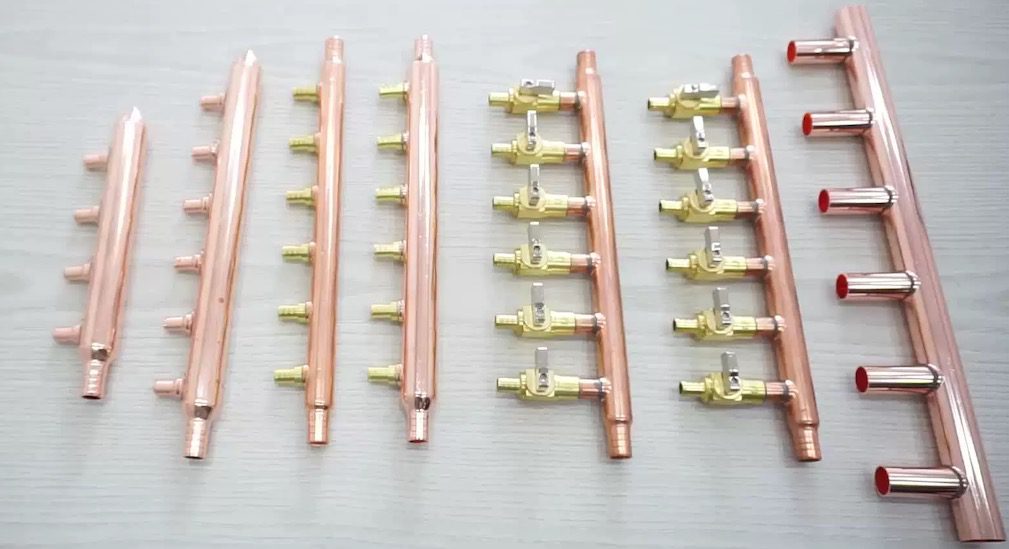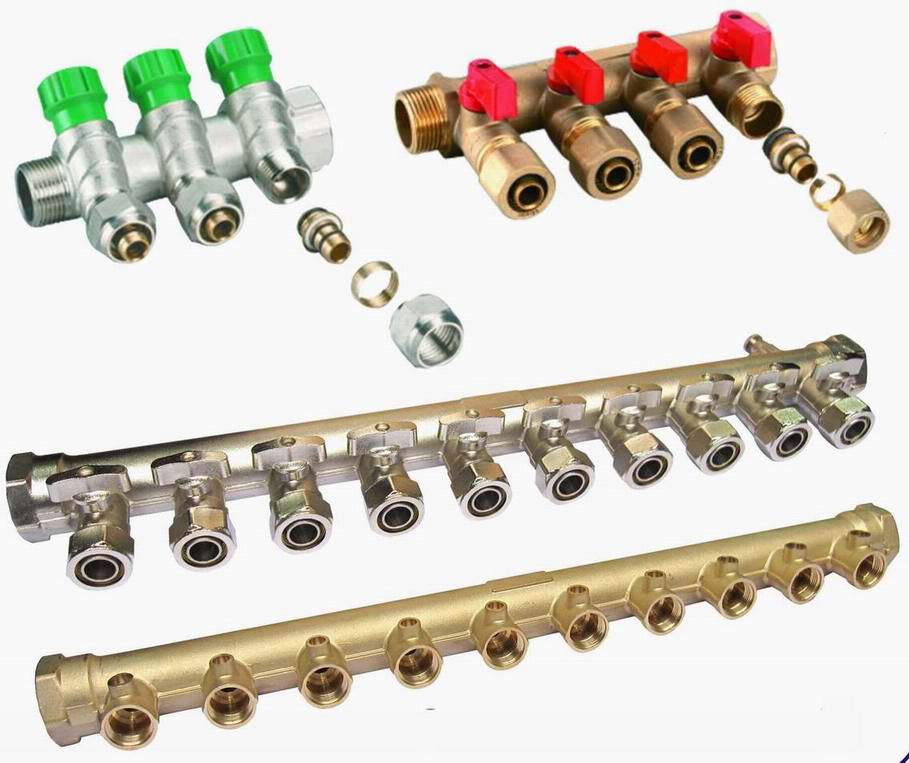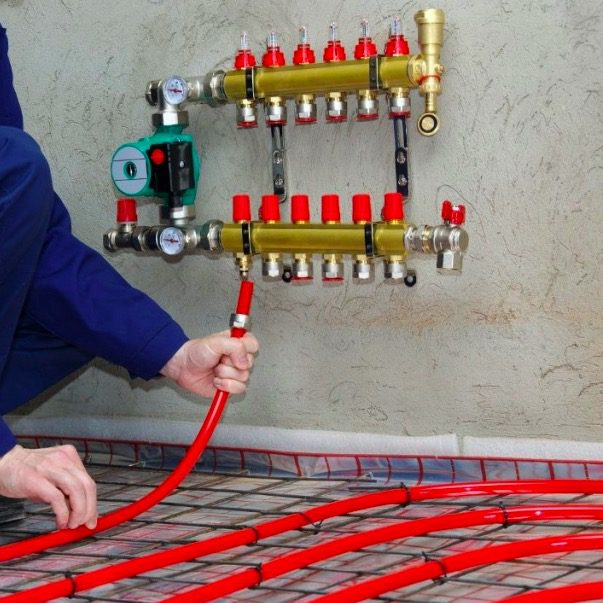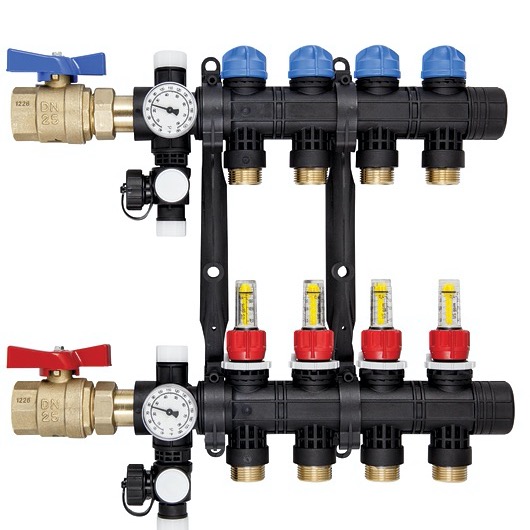I know the confusion when you must pick brass or copper manifolds. The wrong choice can lead to leaks, cost issues, and client complaints.
Brass manifolds are usually the better choice for PEX systems because they offer stronger corrosion resistance, easier installation, and better long-term stability under changing temperatures and pressures.
I will walk you through the key differences and help you decide with clarity. I also add my own experience from almost 20 years in the brass fittings field.
What is the Difference Between Brass Manifolds and Copper Manifolds?
I often meet buyers who assume brass and copper have the same performance. This is a common mistake that leads to poor system results.
The main difference is that brass manifolds are engineered for mixed-material systems like PEX, while copper manifolds perform better in rigid copper-pipe systems. Brass offers higher corrosion resistance, easier fabrication, and better compatibility with modern plumbing.

Brass VS Copper Pex Manifolds
When I first worked in a brass factory, I learned that many issues in projects came from material mismatch. Copper expands and contracts differently from PEX, so the system can develop stress points. Brass handles these changes better. Below, I break down the details.
Material Composition
| Feature | Brass Manifold | Copper Manifold |
|---|---|---|
| Composition | Brass, grade 57-60% copper + zinc alloy | Pure copper |
| Corrosion Resistance | Very high | High but sensitive to water chemistry |
| Cost | More stable | Often higher |
Brass is an alloy. This gives it more flexibility in manufacturing. I can adjust strength, corrosion resistance, and machinability by changing the zinc ratio. Copper cannot be adjusted this way. Copper is pure metal, so it stays rigid and less adaptable to modern system demands.
Performance in Real Systems
The biggest real-world difference comes from how each material behaves under fluctuating water temperature and PEX pipe expansion1. Copper manifolds are stable, but they react strongly to hot-cold cycles. This reaction creates noise, stress, and sometimes cracks. Brass tolerates these changes better. In my early years, I saw many copper manifolds2 returned due to stress fractures. Once customers switched to brass, their failure rate dropped almost to zero.
Installation and Compatibility
Brass manifolds are easier for installers because the threaded ends are stronger and less likely to deform during tightening. Copper manifolds need soldering or press fittings, which raises labor time. Many buyers in North America now prefer brass because their installers moved away from soldering to avoid labor skill shortages.
Cost Consideration
Copper prices change fast. When copper price rises, copper manifolds become unpredictable for procurement. Brass prices are more stable because zinc offsets some fluctuations. Many of my clients choose brass simply because they can better plan their budgets.
How to Choose the Right Manifold for Your Project–Brass or Copper?
Buyers often ask me which one fits their project. I know the stress when you must balance quality and cost at the same time.
Choose brass manifolds when you work with PEX, mixed-material pipe systems, or projects that require fast installation. Choose copper only when you use full copper systems and need high thermal conductivity.

Brass or Copper Manifolds
When I source materials for clients, I always check three points: system type, installer preference, and long-term maintenance risk. These simple checks help you avoid project delays and costly callbacks.
Check the Piping System Type
| System Type | Best Choice | Reason |
|---|---|---|
| PEX plumbing | Brass manifold | Better compatibility and expansion control |
| Hydronic heating | Brass manifold | More stable under temperature cycles |
| Full copper piping | Copper manifold | Same material expansion behavior |
PEX systems move more than copper systems. This is why brass, which has higher tolerance for expansion and vibration, is more suitable. If your system uses full copper, then copper manifolds still make sense.
Check Installation Requirements
I learned that installers love brass because it reduces installation time by almost 30%. Threaded or compression connections are simple and fast. Copper manifolds often require soldering. In North America and Europe, skilled plumbers are expensive. Labor cost can be higher than material cost. So brass saves budget even when its unit price is similar.
Check Water Quality and Corrosion
Brass performs better in areas with mixed or hard water. Many regions in Canada and the U.S. have high mineral levels. Copper reacts faster with minerals, especially when the water is acidic. Brass is more stable, especially with proper low-lead formulations.
Consider Supply Chain Stability
For wholesalers and OEM buyers, price stability is a key factor. Brass prices remain predictable. Copper follows global mining volatility and can jump in one week. I always advise my clients to choose brass when they need long-term supply contracts.
Why Brass Pex Manifolds is Better than Copper for Pex Manifolds?
Many buyers want a simple, final answer. They want to avoid doubts when presenting to their managers or customers.
Brass PEX manifolds are better because they fit PEX behavior, resist corrosion, reduce installation time, and deliver better reliability in real use.

brass pex manifold is better
I have seen thousands of systems over the past two decades. Brass consistently performs better when paired with PEX. Below, I explain the most important reasons.
Better Compatibility With PEX Expansion
PEX expands and contracts more than copper. Brass handles this movement because it is an alloy with natural flexibility. I saw fewer failures in brass systems, especially in heating applications where water temperature is high.
Higher Resistance to Dezincification
Some buyers worry about brass because of dezincification. This was true many years ago. Today, all quality suppliers—including our team at VPEXCO—use low-lead, dezincification-resistant (DZR) brass. This type of brass stays stable even in harsh water. Copper can also corrode under certain water conditions, especially when chloride levels are high.
Faster Installation, Lower Total Cost
When I help clients calculate cost, I include labor, training, tools, and maintenance. Brass always gives a lower total cost, even if the purchase price is similar. This is why big distributors in Europe and Canada prefer brass for PEX.
Stronger Thread Strength and Fewer Leaks
Brass threads stay sharp and clean during manufacturing. This gives better sealing. Copper threads are softer, so they deform more easily. Installers notice this. They always tell me they trust brass threads more.
Long-Term Project Stability
Many PEX installations run for 20–30 years. Brass manifolds stay stable for that duration. This is why hotels, residential buildings, and heating contractors choose brass. They want to avoid future repair liability.
Brass manifolds give better compatibility, stability, and long-term reliability for PEX systems, so they are the smarter choice for most projects.





